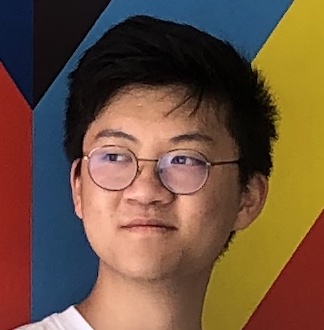Applications and Computations of Floer Homology Learning Seminar
- Time : Thursdays 12-1pm
- Location : Mathematics 417
- Organizers: Alex Xu
Monopole Floer and Heegard Floer homology are essential tools in low dimensional topology and have been crucial to many breakthroughs in the last 20 years. However, this machinery is rather complex and in practice many computations will use formal properties, such as surgery exact sequences, homology pairing formulas, or formal dimension computations. The goal of the seminar is not to prove these results, but rather to use these formal properties as a black box to do concrete computations and applications of Floer homology.
The format is that every week someone presents a paper/preprint on some explicit computation or an application of Floer homology. Following is a tentative list of topics; of course participants are free to present anything on applications of Floer homology (broadly understood).
Tentative topics:
- Computations of Seiberg-Witten invariants for various 4-manifolds (e.g. elliptic fibrations) Kronheimer Mrowka, “Monopoles and 3-Manifolds”, Ch. 39
- Floer homology detects the Thurston norm
- Monopole Floer homology detects the unknot arxiv.org/abs/math/0310164
- Computations of the Floer homology of branched double covers arxiv.org/abs/math/0309170
- Simply connected definite 4-manifolds and symplectic structures arxiv.org/pdf/1510.00373.pdf
- Knot surgery formula for Floer homology arxiv.org/abs/math/0410300, arxiv.org/abs/math/0504404
Seminar Schedule
| Week/Date | Speaker | Title | Abstract |
|---|---|---|---|
| 2/16 | Alex Xu | Intro to Heegaard Floer homology | Heegaard Floer homology and knot Floer homology are powerful tools in low dimensional topology. In the first part of this talk we focus on constructing the Floer chain complex and doing computations in simple cases. References: OS, H, M |
| 2/23 | Alex Xu | Intro to Heegard Floer homology pt.2 | This week we continue with some example computations of Heegard Floer homology. We will also define and discuss the related knot Floer homology. References: Same as last week |
| 3/2 | Alex Xu | Knot Floer Homology | Knot Floer homology is a powerful tool that categorifies the Alexander polynomial. This week we will write down the knot Floer complex and do some example computations. If time permits, we will also discuss algorithmic approaches to computations. |
| 3/9 | Sebastian Haney | Cobordism maps in Heegard Floer homology | We will discuss the construction of cobordism maps on Heegaard Floer homology, and explain how they give rise to absolute Q-gradings. If time permits, we will also introduce the correction term from Heegaard Floer homology. |
| 3/16 | Spring break | ||
| 3/23 | Seminar paused | ||
| 3/30 | Seminar paused | ||
| 4/6 Sebastian Haney | Cobordism maps in Heegard Floer homology | We continue the discussion of cobordism maps on Heegaard Floer homology, and explain how they give rise to absolute \(\mathbb{Q}\)-gradings. If time permits, we will also introduce the correction term from Heegaard Floer homology. | |
| 4/13 | Johan Asplund | The Ozsváth–Szabó contact invariant | We will discuss how to associate to a contact structure on an oriented 3-manifold an element in Heegaard Floer homology called the Ozsváth–Szabó contact invariant. The definition involves computing a filtered version of the knot Floer homology of a fibered knot. Applications include detecting tightness of contact structures and obstructing Stein fillability of contact manifolds. |
| 4/20 | Alex Xu | Surgery Obstructions from d-invariants | We will discuss the construction of d-invariants for rational homology spheres due to Ozsváth–Szabó. These arise as correction terms coming from Heegaard Floer homology and provide obstructions for realization of rational homology spheres as surgery on a knot. If time permits, we will discuss some Seifert fibered examples due to Hom, Karakurt, and Lidman. |
| 4/25 | Ross Akhmechet | An introduction to lattice homology | (Note: this talk will be in room 622) Building on work of Ozsváth-Szabó, Némethi introduced lattice (co)homology, a combinatorially defined invariant of a certain class of 3-manifolds which is known to recover Heegaard Floer homology. I will give an introduction to the subject and comment on joint work with Peter Johnson and Slava Krushkal, and also on forthcoming work with P. Johnson and Sunghyuk Park, on connections between lattice homology and certain aspects of quantum topology. |
| 4/27 | Alex Xu | Surgery Obstructions from d-invariants | We continue the discussion last week on obstructions for realization of rational homology spheres as surgery on a knot due to Hom, Karakurt, and Lidman. The key ideas come from a computation of d invariants for plumbed 3-manifolds due to Ozsváth–Szabó as well as a surgery formula due to Ni-Wu. |
| 5/4 | Siddhi Krishna | Spineless 4-manifolds and d-invariants | I’ll discuss results of Levine-Lidman and Hayden-Piccirillo, who prove that there exist simply connected, spineless 4-manifolds. The former use d-invariants as their primary obstruction, while the latter use an adjunction inequality. I’ll compare and contrast their respective strategies. |
